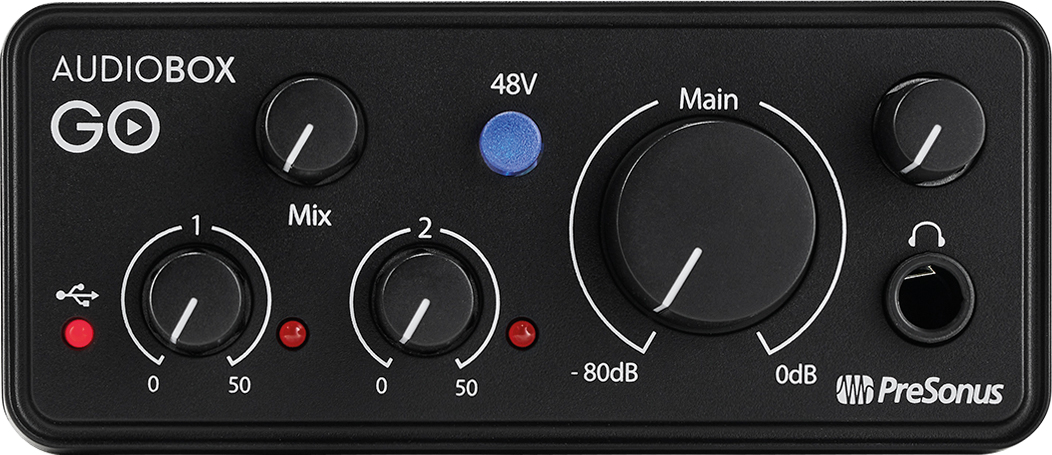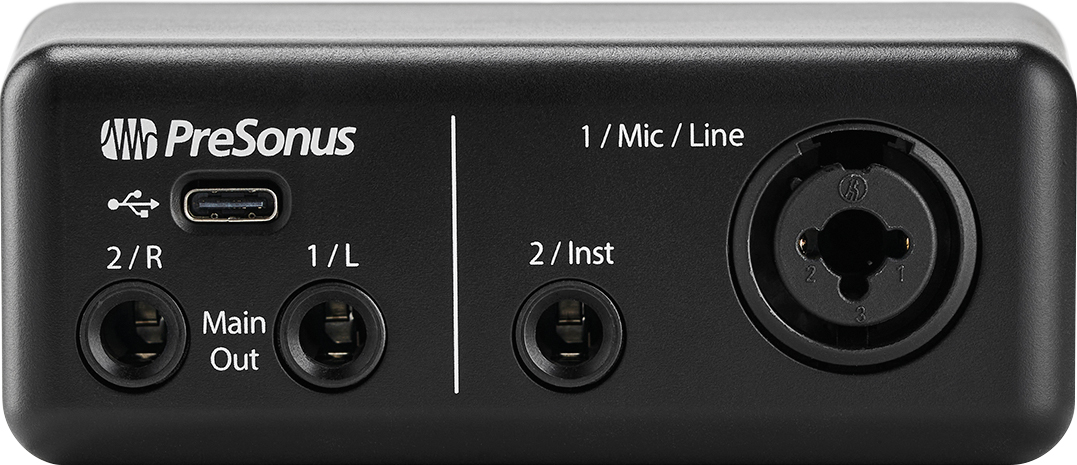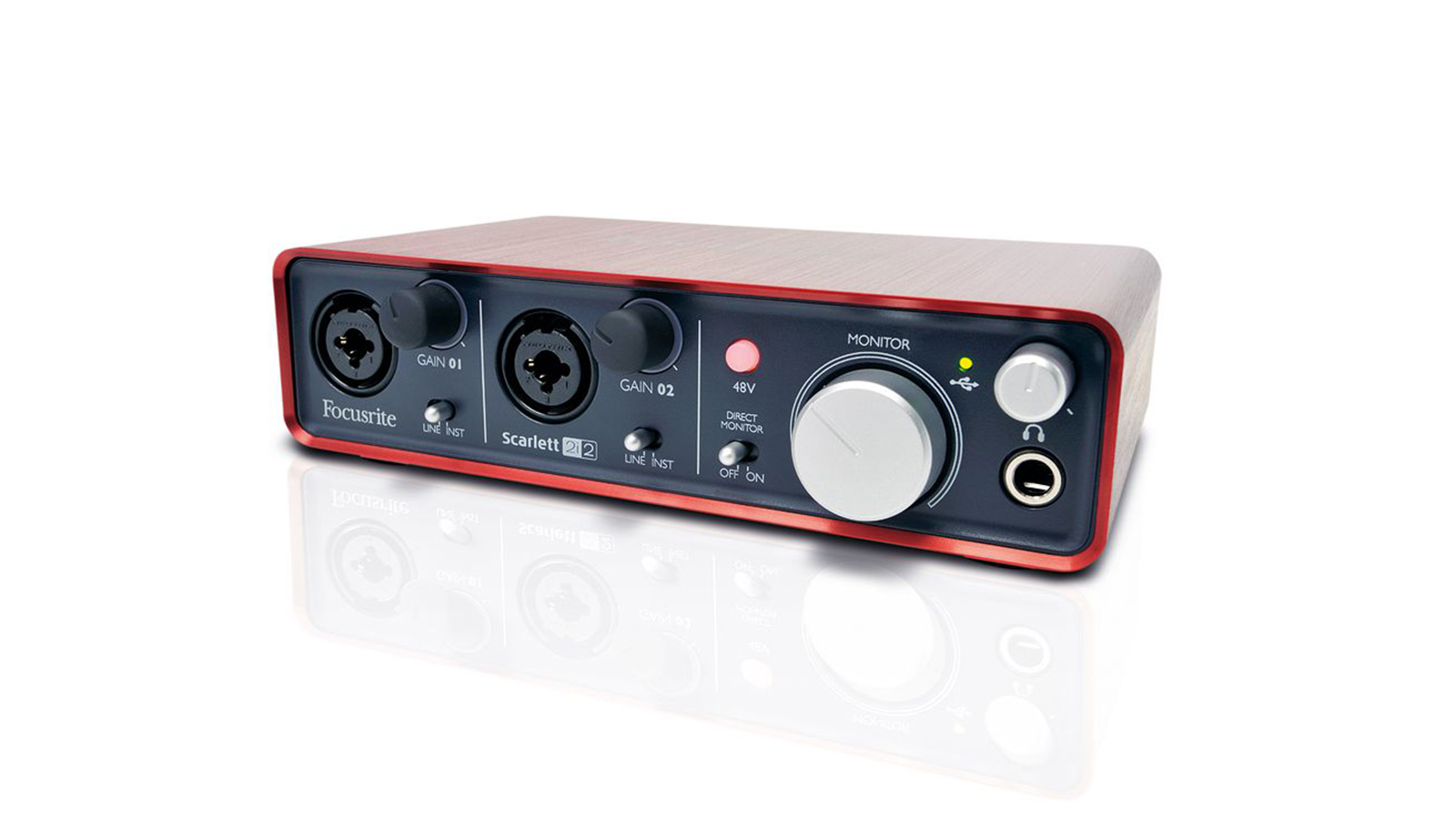MusicRadar Verdict
The AudioBox GO is a sterling little basic interface that can hitch a ride with you whenever and wherever your music takes you.
Pros
- +
Tiny and lightweight.
- +
Simple, plug and play operation. Solid bundle of software included.
- +
Very affordable.
Cons
- -
Plasticky.
- -
Too basic for power users.
- -
Some users may require more gain.
MusicRadar's got your back
PreSonus AudioBox GO review: What is it?
In our quest for a consummate life, we tend to be drawn to big complex solutions, largely forgetting to appreciate the small, simple things. This is why we have a lot of time for PreSonus' new wedge-shaped AudioBox GO interface.
It's tiny, about the size of a chunky slice of tasty Gorgonzola laid on its side. Weighing next to nothing, about 220g, it's also about as complicated to use as a corkscrew. What's more, to continue the food & drink analogies, it's as cheap as chips.
The diminutive twin-channel AudioBox GO is now PreSonus' entry-level audio interface, short on features and low in price but still remarkably capable. Think of it as a plucky little terrier, rather than the runt of a Goldendoodle litter.
PreSonus is positioning it as your first interface. One that'll easily fit in the smallest, most ridiculously cluttered student bedroom, and one that'll comfortably travel with you when you're out recording with your mates.
A complete recording solution for novices, it's bundled with Studio One Prime, PreSonus' excellent DAW, plus StudioMagic, a collection of samples, software instruments and utilities. Of course, it'll also work with GarageBand or any DAW of your choosing, and it's capable of recording at 24-bit/96kHz.
Controls and I/O are spartan. At the front are rotary knobs for gain, main out volume, headphone volume, mix, a phantom power button and a 1⁄4" TRS headphone socket. Round the back there are two 1⁄4" outs, a USB-C socket, a hi-z 1⁄4" TRS input and a mic/line XLR combi socket.
Externally at least, build quality is best summed up as sufficient. The AudioBox GO is little more than a tiny plastic box with five matching plastic knobs and a few basic, through-hole red LEDs. So what? It would be unreasonable to expect more at this price point, we're more interested in how it performs.


PreSonus AudioBox GO: Performance & verdict
Plug it in – the AudioBox GO is USB bus-powered – and the power LED lights up like a red-eyed Cyclops caught in bright headlights on a dark night. It's dazzlingly strong, but at least you'll know when the unit is on.
Hooking up instruments, a guitar and a mic in our case, is as easy as, well, plugging them in, but it's a slight faff reaching around the back of the box to do so. Similarly, the AudioBox GO is so light that just a slight tug on either cable sees it hopping across the desk. Neither complaint is a biggie, these are just small, necessary compromises when playing with something so portable.
Operation couldn't be more straightforward, or more manual. Each channel has a gain knob that provides 50 dB of variable gain (0 to +50 dB for mics, and -15 to +35 dB for line/instrument) and bright red LED that illuminates if your signal starts clipping. Phantom power can be supplied to the XLR out via a small textured button that illuminates a soft cobalt blue when turned on. Quite a contrast to those angry-looking red LEDs.
A big knob, labelled Main, controls the output level to your speakers, and there's a smaller headphone level knob too. Finally, a mix knob enables direct latency-free monitoring.

Focusrite Scarlett 2i2: If you want to record vocals as well as guitar then you really can't go wrong with the Scarlett 2i2, which has to be one of the most popular audio interfaces on the market!
SSL 2+ audio interface: If you are a little more serious about recording, then you may want to check out the SSL 2, which offers truly outstanding audio quality.
Essentially, you just plug in, set your levels and, well, go. It's that easy. Perfect, for spontaneous, off-the-cuff recordings when the last things you want to worry about are complex routings, compression settings, headphone mixes and so on.
PreSonus hasn't published an EIN figure for the AudioBox GO's preamp, but we found it to be suitably quiet. Pristine? Well, it's not going to get the teams at Neve or Universal Audio in a fluster, but it's more than up to the job.
The only caveat is that 50 dB of gain is not really enough to cope with gain-hungry dynamic mics, such as Shure's SM7B, a podcasters' favourite. So, if you're using a mic like this be aware that your recordings could become noisy.
MusicRadar verdict: The AudioBox GO is a sterling little basic interface that can hitch a ride with you whenever and wherever your music takes you.
PreSonus AudioBox GO: Hands-on demos
PreSonus
PreSonus AudioBox GO: Specifications
- 2-in/2-out
- USB 2.0
- 24-bit/96kHz
- USB-C connector
- 50 dB variable gain
- Direct monitoring
- Weight 220g
- Contact: PreSonus
When Simon's childhood classical guitar teacher boasted he 'enjoyed a challenge', the poor man had no idea how much he'd underestimated the scale of the task ahead. Despite Simon's lack of talent, the experience did spark a lifelong passion for music. His classical guitar was discarded for an electric, then a room full of electrics before Simon discovered the joys of keys. Against all odds, Simon somehow managed to blag a career as a fashion journalist, but he's now more suitably employed writing for MusicRadar and Guitar World. When not writing or playing, he can be found terrifying himself on his mountain bike.











